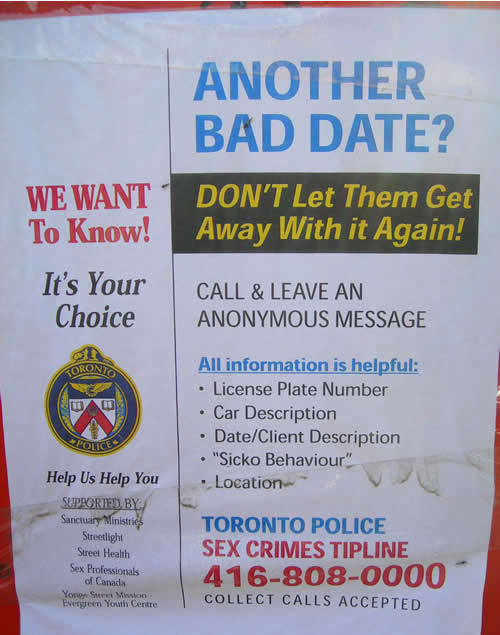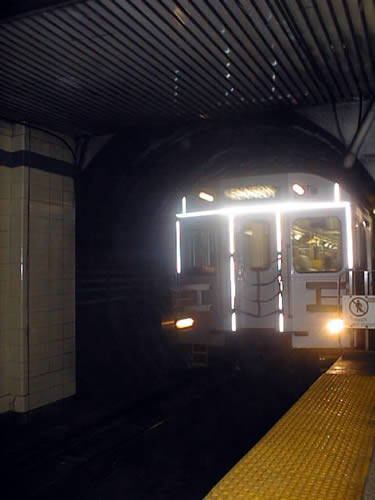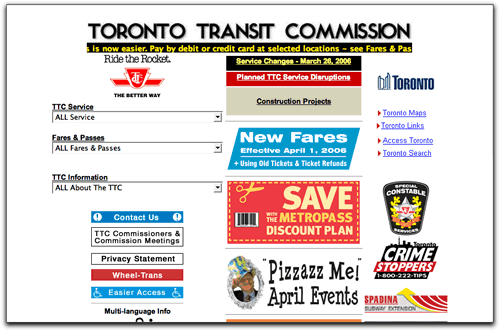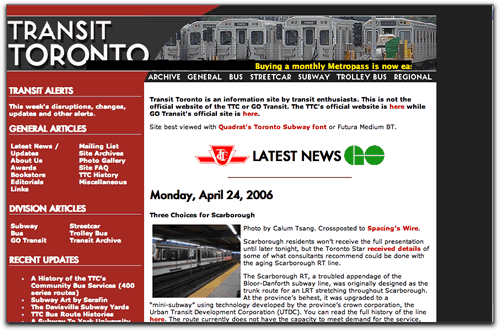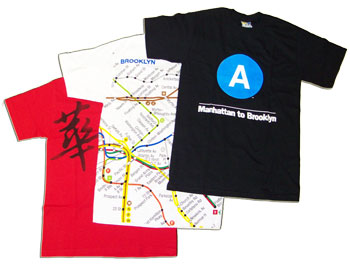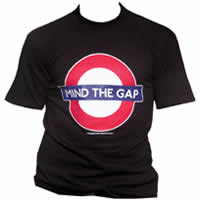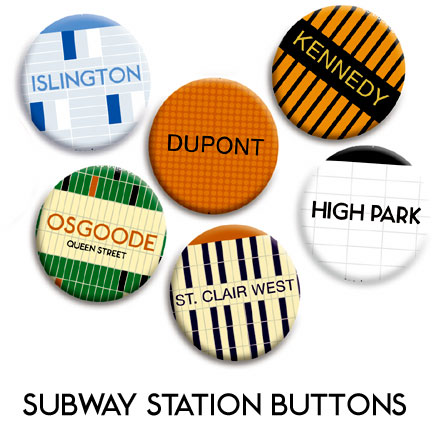Accordion City is a pretty great place to live, but the folks at City Hall and their committees are downright incompetent when it comes to extolling the city’s virtues. Case in point: the recent “Toronto Unlimited” ad campaign, launched last summer:
Widely regarded as a disaster except by the blinkered idiots who devised this campaign (consider that Tourism Toronto’s CEO loves to refer to the local citizenry as “humanware”: “Toronto’s humanware is blossoming”), the Toronto Unlimited campaign is a toxic sausage of unoriginality, amateurish graphic design, ad copy written either by gifted apes or sub-100-IQ humans and cluelessness as to the “feel” of the city, wrapped in a four million dollar casing.
After all the criticism the campaign received last year, the Toronto Unlimited campaign was watered down, with some of the most laughable elements completely removed. However, the culprits, Tourism Toronto, are still driving the bus, and it shows.
The current incarnation of the Tourism Toronto site still bears some of the terrible writing from the Toronto Unlimited campaign. Consider this gem, which you can find on the Toronto’s Story page:
You know the feeling you get when you come across an amazing menu and want to order every dish? That’s what it’s like to be here. Literally, we have an unparalleled variety of spice but we take fusion to a level far beyond cuisine. Find beautiful architecture of the city’s settlers alongside modern, sleek, gold-tinted skyscrapers. We’re modest but celebrate voraciously with over 1000 festivals every year. Our Mayor’s limousine is a hybrid electric Toyota Prius. How’s this for juxtaposition? – our street vendors even dish up vegetarian hot dogs!
Even first-graders at “show and tell” don’t express ideas in such a scatterbrained fashion. The committee who wrote this dreck should be put on a year’s worth of stoop-and-scoop duty at High Park for this crime against writing.
The Tourism Toronto site is terribly short on information. The “Where to Shop” page makes it look as if there are almost no places to shop in the entire city. Using the site’s search engine to find places to buy clothes in thew west end of Toronto yields one result: Roots.
Should you be lucky enough to find information on the site, it’s presented poorly. Consider the one result for my search for clothing stores in the west end: no address or “how to get there” information was provided — just a phone number. Ontario Place is listed as “Ontario Place Corporation”, which makes it sound like a provincial real estate company instead of a waterfront park with a concert amphitheatre, water playground, pedal boats and an IMAX theatre.
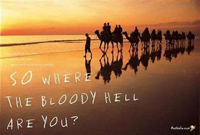 It has been suggested that Toronto should emulate Australia’s “Where the Bloody Hell Are You?” ad campaign, which is considerably truer to Australian character and much “ballsier” than the Toronto Unlimited concept (remember, “bloody” is a swear word in some variants of English). It’s memorable, it’s catchy, it’s a little bit risque, and it works.
It has been suggested that Toronto should emulate Australia’s “Where the Bloody Hell Are You?” ad campaign, which is considerably truer to Australian character and much “ballsier” than the Toronto Unlimited concept (remember, “bloody” is a swear word in some variants of English). It’s memorable, it’s catchy, it’s a little bit risque, and it works.
I propose that we use the (possibly fake) old book cover shown below as the basis of the next Toronto campaign. Those of you on the left or who subscribe to Richard Florida’s “Creative Class” theory will enjoy it in an ironic way, those of you on the right will grumble and say “well, it’s true”, and believe you me, it will draw a crowd and everyone will remember it:
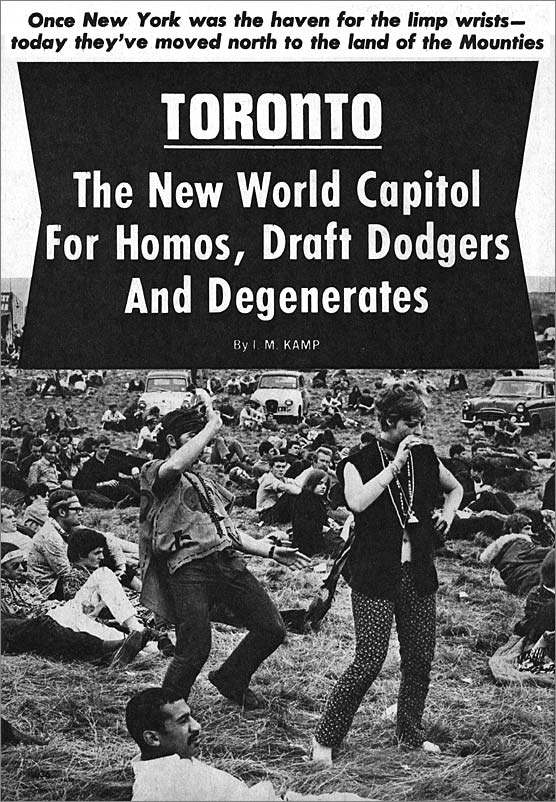
As Hackworth, who posted this image on a file-sharing board says, “Rock on, Toronto!”


